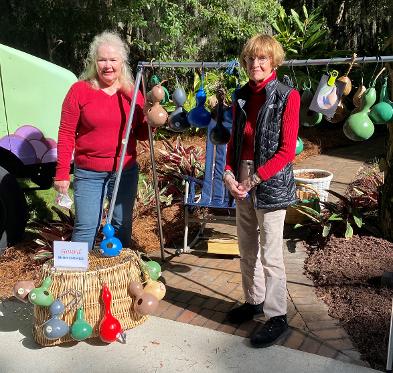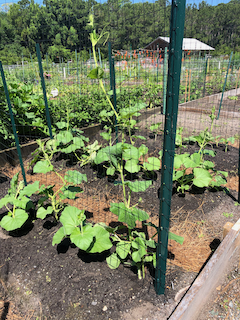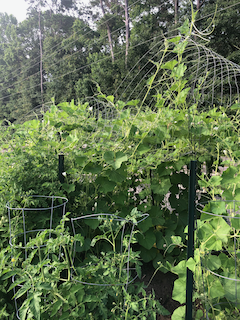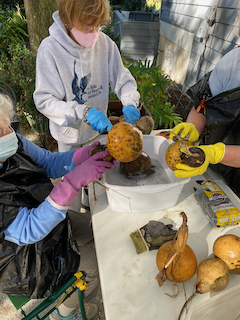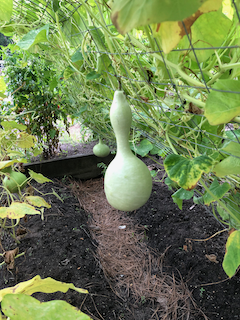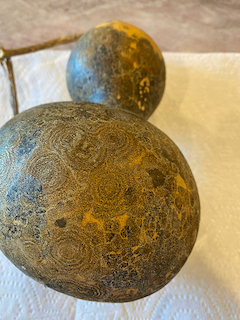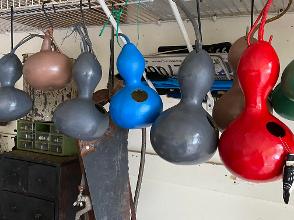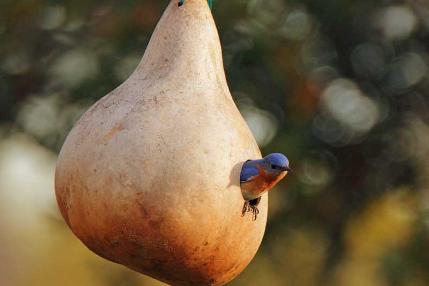The Bird House Gourd Project was imagined by two creative Landings GardenClub members, Pat Wolters and Jean Deitch while touring Pat’s backyard bird sanctuary. Pat heads the Orphan Bird Rescue on Skidaway Island and Jean was head of Birds & Conservation and is always up for an interesting project. They asked and received approval from the Garden Club to proceed. Soon after, Jayne Rogers, Master Gardener, joined the group and the planning began. It was decided to grow plants from seed as locating plants was not possible. Since our Community Garden is irrigated and fenced against deer and wild pigs, it seemed the perfect spot to begin our experiment. While the group and the Garden Club was excited about adding birdhouse gourds to the local landscape, the hot, humid climate of Coastal Georgia would make the project difficult.
Seeds were started from both Burpee and an Ohio Amish farm and cared for indoors beginning in January. By March the farm plot was prepped with compost and 45 6-inch seedlings were planted in 8 rows with fencing and stakes for support. The group hand watered the plants every other day through May when blossoms were visible on vines that topped the 6-foot fence so additional arched fences were added. Fertilizer was added but the plants grew so fast, straining the arched fencing that fertilizing was discontinued. By mid-June 10” gourds were growing and in early July the stems of the bright green gourds began to brown, it was time to harvest. However, they realized the gourds do not dry in the humid coastal Georgia climate, so the group took the harvested gourds to their homes and a dry climate. As the gourds were drying, they went from the green plump skin to black moldy thin-skinned gourds.
In September, they realized it took longer than expected for the gourds to dry, lose their fleshy rind and have a thin hard shell. When the gourd is shaken and the seeds rattle inside, they are ready to be cleaned and prepped for making into bird houses. Cleaning began, and it was also a learning process. The best method to clean the dark moldy rind was to first use bleach and then scrub with a stainless steel scrubby in soapy water. The gourds were fragile and broke easily, even with great caution a few necks were broken and were turned into tiny vases. Seeds were collected as the holes were drilled in case the project continued in 2021.
After drying, cleaning and drying again holes were drilled for making into birdhouses. The holes were drilled at the top for a hook to hang, 4 holes in the bottom for drainage. Then using Pat’s expertise, 1 ¼” holes were drilled for Nuthatches, Carolina Wrens & Chickadees and 1 ½” holes for Bluebirds. Many of the gourds displayed a natural pattern and were unpainted to show nature’s beauty. They are all works of art!
